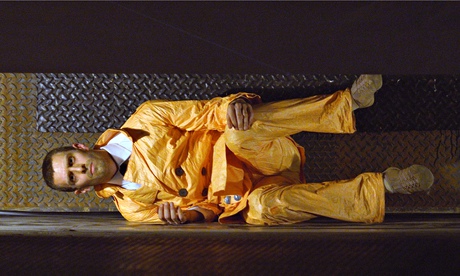
In recent years, progressive dance-makers in the UK have started to ask hard questions about their work. The concern is that contemporary dance, as presently configured, is irrelevant to most people’s concerns. That it’s evolving into a self-referential, self-sustaining loop, unhooked from the wider culture. If genuine public demand is to be created, the thinking goes, dance must turn its gaze outwards towards other art forms. Not with a view to some specious “response”, but in order to socialise and educate itself. Basically, dance needs to get out more.
New Movement Collective (NMC), established in 2009 by Jonathan Goddard and other former Rambert dancers, aspires “to change and evolve the landscape of contemporary dance”, and although lower-profile than many contemporary ensembles, is acquiring a reputation for inventive, literate, site-specific work. Nest, NMC’s take on Homer’s Odyssey, was set in a disused chapel in Shaftesbury Avenue, London, which formerly housed the notoriously louche Limelight club. Close Protection was a film collaboration with the army that brought together choreography and night-vision technology.
In Casting Traces, commissioned by the architect Will Alsop and devised by the seven-strong cast, NMC addresses Paul Auster’s metafictional detective series The New York Trilogy. The work has been performed in a former dairy in Battersea, south London and a disused brewery in Copenhagen, but last week’s venue, a derelict flower market in Brighton, was NMC’s largest and most challenging to date. Extending for 2,000 square metres, a home to scavenging foxes and in places open to the elements, this was a long way from the well-appointed stages on which the dancers cut their theatrical teeth. Within the building’s shell, the Danish architect Elin Eyborg created a complex labyrinth of paper screens through which unfolding choreographic tableaux were partly, but never fully, visible. Eyborg also incorporated hidden surveillance cameras which projected images of unsuspecting audience members on to the screens as they attempted to negotiate the half-lit performance space. The violinist Linda Jankowska, meanwhile, moved ghost-like through the crowd, playing a cryptic, suggestive score composed by Szymon Brzóska.
You don’t have to know Auster’s work to engage with Casting Traces, but it helps, as the Trilogy is referred to in every element of the piece. Phones ring and suggestive silhouettes are flashed against the walls of Eyborg’s fragile paper rooms, reminding us that the characters we see are products of Auster’s literary imagination, born between the pages of his books and contained within the shifting, fast-dissolving bounds of his narrative. The choreography, devised by all the NMC dancers, has a writerly flow, unfolding as words, sentences and paragraphs of elegantly turned and phrased movement.
It is very clearly derived from Auster’s prose. “In the good mystery there is nothing wasted, no sentence, no word that is not significant,” he writes, and we see this calculation echoed in Goddard’s tense stillnesses and jaguar pounce, the tightly focused lyricism of Malgorzata Dzierzon, the stripped-back glare of Hannah Kidd. At intervals, the dancers draw their own outlines in water on the screens and move through the collapsing paper into new spaces. They seem to step from page to page, scene to scene: metaphors made flesh. That all seven are superlative in craft terms goes without saying, but it is implicit in NMC’s approach that craft without sophisticated purpose is not enough.
Which is where they part company with many of their contemporaries. There’s a lot of conceptual dance afoot these days, but only in a very few cases are the concepts the equals of the dance. Which is dismaying, because in craft terms the extraordinary has become ordinary. When you can turn on YouTube and see some hot-housed, hyperextended pre-teen whip off multiple pirouettes on pointe, it’s ideas that you yearn for.
NMC give you ideas, and in doing so take their place among the very best new dance practitioners. If dance is to stand shoulder to shoulder with literature, drama, film and other contemporary art forms, rather than wringing its hands over its Cinderella status, this is how good – and vitally, how intelligent – it has got to be. That self-referential loop needs to be broken.

